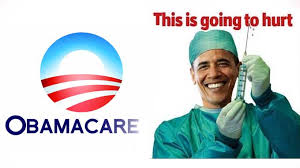The deadline for ACA open enrollment for 2015 is December 15th and the penalty for not enrolling? 2.5% of your income. The good news is that Obamacare does have 14 hardship exemptions–some of which you might find surprising. At least 2 of them do not require any proof. Here are some examples and the proof you need:
1. You were homeless (no proof needed)
2. You received a shut-off not from a utility company (proof is copy of the notice)
3. You recently experienced domestic violence (no proof necessary)
4. You experienced a fire or flood (copy of insurance claim or fire report)
5. You had medical expenses you couldn’t pay in the last 24 months (copy of medical bills)
6. You experienced “another hardship in obtaining health insurance (“please submit documentation, if possible”)
For the full list of exemptions, click here.
There was a lot of discussion regarding the hardship exemptions back in early 2014 and whether these would be easy to obtain or difficult. For a nice article, read the Wall Street Journal’s take.
At Evolve Medical, we feel the smartest coverage is through a direct pay primary care, such as what we do. For just $35 per month, almost all of your primary and urgent care needs are covered. Then add in a bronze plan with a deductible of $6,000 or even a catastrophic plan. The reality is that most people will never run up their medical bills enough to hit their deductible–unless they have an accident or big unplanned event.
And that is what insurance is for. Fires, big car accidents–not routine things like wiper blades or gas. Fortunately or unfortunately, we can no longer look to health insurance to pay for everything. It is moving in the direction of all the other insurances.
The exception to this rule is for those that are chronically ill and see doctors very regularly, such as those undergoing long term treatment for neurologic disorders, cancer, or have multiple ongoing problems.
But for most of us, paying about $1 per day and then $25 copays is a phenomenally good deal. Many DPPC (Direct Pay Primary Care), including Evolve, have negotiated steep discounts in labs, radiology and even heart imaging so that IF someone needs additional testing (which they would have to pay out of pocket because their deductible–but would pay the full rate–up to $1,000 for an MRI).
“Despite its inclusion in Obamacare, Direct Primary Care (DPC, aka Concierge Medicine for the Masses), it’s surprising how few health insurance executives know about DPC. DPC is a model of paying for primary care outside of insurance. The individual or organization paying for healthcare pays a monthly fee (like a gym membership) for all primary care needs. Generally, DPC providers say they can address 80 or more of the top 100 most common diagnoses,” According to David Chase in an article published in Forbes last year. He goes on to add, in that article,
“DPC practitioners believe that they achieve the Triple Aim (improve patient experience, improve health and lower per capital costs) perhaps better than any other delivery model in place in the U.S., and they are mystified that DPC hasn’t grown faster than it has. ”
He also quotes Jennifer Limon of Beryl, a company using DPPC:
“Instead of delivering the bad news during open enrollment: costs are going up, benefits are being reduced—it is a positive time where we are able to report that costs are not going up and we receive feedback from our co-workers about how pleased they are with the healthcare coverage that the company is providing
Ms. Limon goes on to say that employees now have an incentive to seek care early that can head off more serious issues. Indeed, because the WhiteGlove visits are seen as inexpensive, the firm expects to see costs continue to decline as workers seek early treatment.
“We were looking for ways to help reduce healthcare costs and absenteeism,” explains Andrew Pryor, VP, and Human Resources for Beryl. “Our absenteeism rate affects our revenue. When we reviewed our company’s current health plan, we discovered that three out of four co-worker’s visits were for routine and preventative-care issues, for conditions such as sinus or ear infections. We also found that a typical visit took two to four hours out of the day, when we accounted for travel time and waiting at the physician’s office.”
Dr. Paul Grundy (Head of IBM’s healthcare where they spend around $2B/year) is quoted as saying: “More primary care access led to a healthier population which, in turn, led to less money spent. This is why IBM has become proponents of the Patient-centered Medical Home as the foundation of the transformation of healthcare delivery.”
 Whether you are an individual or a business, we’d be happy to explain how we can you money and time–and improve your healthcare at the same time. We are sponsoring a free question and answer discussion with Annapolis’ own Paul Murphy on December 12th from 6-8pm. If you are interested, click here to learn more.
Whether you are an individual or a business, we’d be happy to explain how we can you money and time–and improve your healthcare at the same time. We are sponsoring a free question and answer discussion with Annapolis’ own Paul Murphy on December 12th from 6-8pm. If you are interested, click here to learn more.


